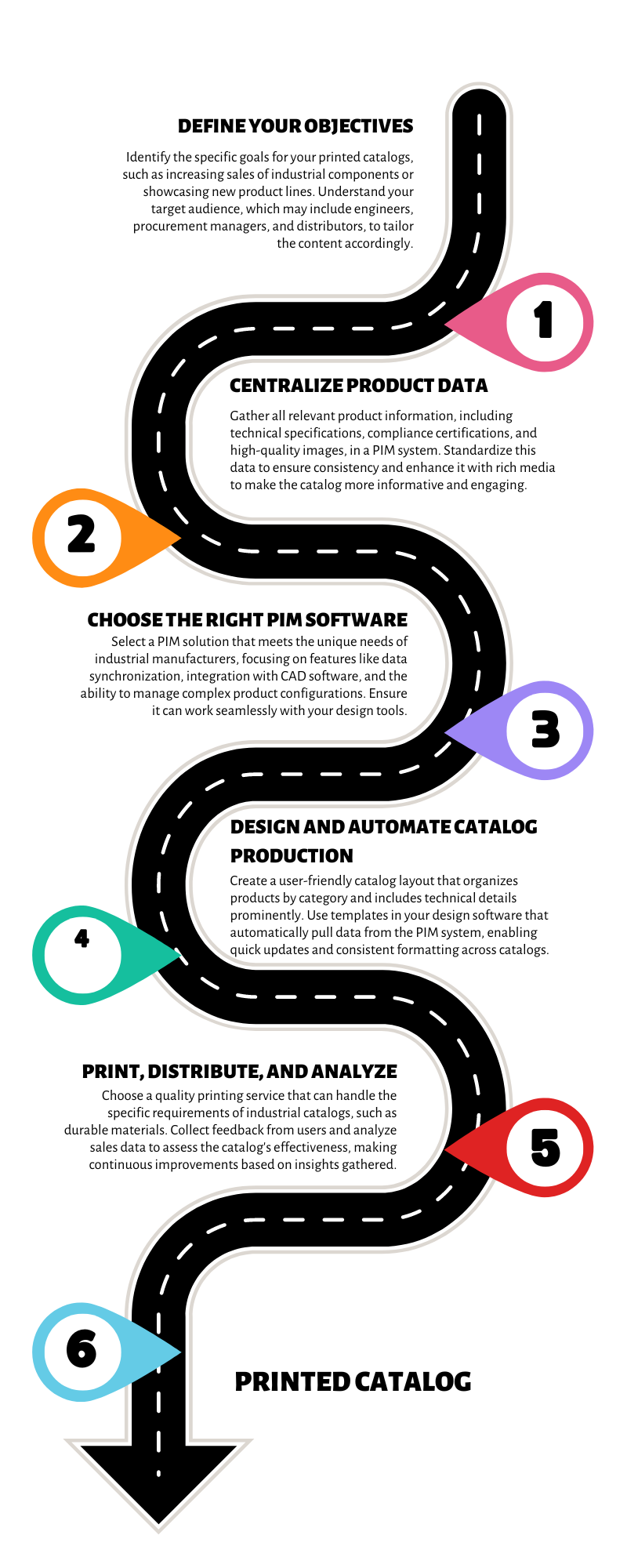Why PIM-Enhanced Printed Catalogs Matters for Manufacturers – and How to Get Started

In today’s competitive landscape, manufacturers face unique challenges in conveying product information effectively. This blog explores how Product Information Management (PIM) enhances printed catalogs, leading to improved accuracy, customer experience, and sales. We’ll also provide a practical guide to implementing PIM solutions, focusing on automation and advanced features that streamline catalog creation.
Introduction
In today’s competitive manufacturing landscape, effectively showcasing products is crucial for success. While printed catalogs have long been a staple, simply creating them isn’t enough.
By integrating Product Information Management (PIM) into your catalog strategy, you can enhance accuracy, consistency, and visual appeal, ultimately driving sales and improving customer engagement
Why Enhanced Printed Catalogs Matter for Manufacturers
Improved Product Visibility
Enhanced printed catalogs provide industrial manufacturers with a clear and attractive way to showcase their products. By using high-quality images and organized layouts, these catalogs help potential customers easily find and understand what they offer. This is especially important in the industrial field, where products can be complex. When customers can quickly navigate through options, they feel more confident in their choices, leading to better engagement and a higher chance of making a purchase. Ultimately, improved visibility can drive growth for manufacturers by turning more leads into sales.
Consistency Across Channels
By creating thorough and consistent printed catalogs, manufacturers can ensure that their product information is the same whether customers see it online or offline. In today’s world, customers often switch between different sources to gather information, so it’s essential to maintain this consistency. When customers know they can expect accurate and reliable information, they build trust in the brand. For example, if a customer browses products on a website and then receives a printed catalog, they should find the same detailed descriptions and specifications. This reliable experience boosts brand reputation and encourages customers to return for future purchases.
Enhanced Customer Experience
Well-designed catalogs offer customers essential information, such as product specifications, usage tips, and real-world examples. This valuable content helps customers make informed decisions, leading to a better overall experience with the brand. In the industrial sector, where product choices can significantly impact operations, having access to detailed information is crucial. A well-crafted catalog goes beyond basic descriptions; it tells customers how products fit into their workflows and solve specific problems. By focusing on the customer experience with informative catalogs, manufacturers can create lasting impressions that encourage loyalty.
Support for Sales Teams
Printed catalogs are powerful tools for sales teams, providing tangible materials to present to clients. In face-to-face meetings or trade shows, these physical catalogs can help facilitate discussions and highlight key product features. Unlike digital presentations, which can feel less personal, a printed catalog offers a hands-on approach that engages clients more effectively. This presence reinforces the manufacturer’s commitment to quality and service, making it easier for sales teams to close deals and build strong relationships. Having a reliable and informative resource also boosts sales representatives’ confidence in addressing questions and concerns, leading to greater success.
Building Brand Loyalty
High-quality printed catalogs reflect a manufacturer’s dedication to excellence. When customers receive catalogs that are visually appealing and packed with useful information, it strengthens their connection to the brand. This positive experience fosters loyalty, making customers more likely to return to a brand that consistently provides high-quality products and information. In a competitive market, brand loyalty can set manufacturers apart, helping them retain existing customers and attract new ones. By investing in well-designed printed catalogs, manufacturers reinforce their reputation for quality and service, creating lasting relationships with their customers.
Analysts Report
Insights into PIM Challenges, Emerging Trends, and Best Practices for 2024 and Beyond

How to Implement PIM-Enhanced Printed Catalogs
Here are the five main steps for implementing PIM-enhanced printed catalogs specifically tailored for industrial manufacturers:

Conclusion:
PIM-enhanced printed catalogs are essential for manufacturers seeking to improve efficiency and strengthen customer engagement. By utilizing Product Information Management, you can ensure your catalogs are visually compelling and filled with accurate, up-to-date product data.
Bluemeteor’s Product Content Cloud plays a crucial role in this process by streamlining product data management. It centralizes all your product information, ensuring it is always accurate and up-to-date. With features like automated data synchronization, real-time updates, and easy integration with your existing systems, you can create high-quality printed catalogs that accurately reflect your brand’s offerings. This not only enhances customer experience but also drives sales and builds loyalty.
Take the first step toward transforming your printed catalogs. Request a demo




